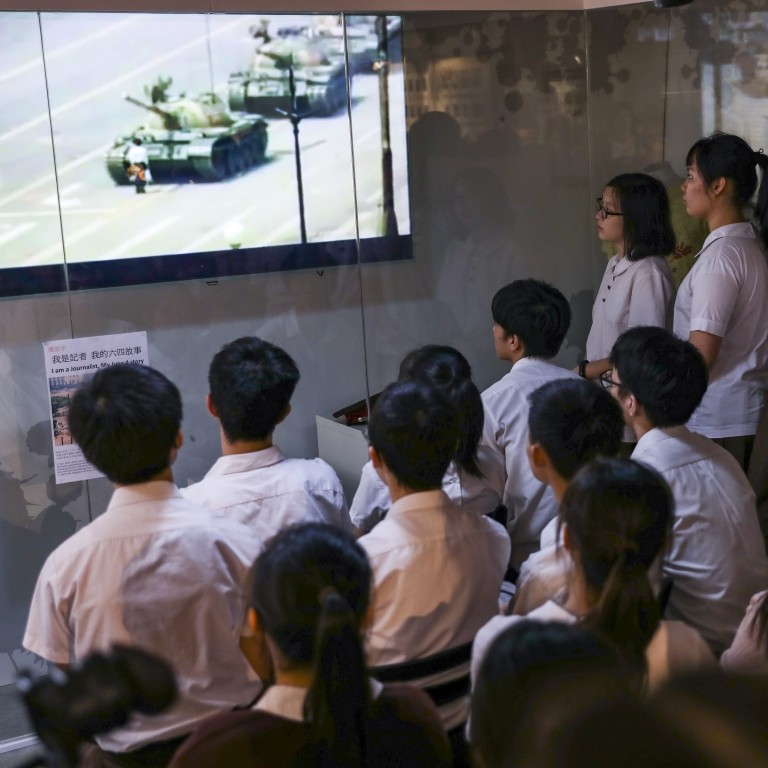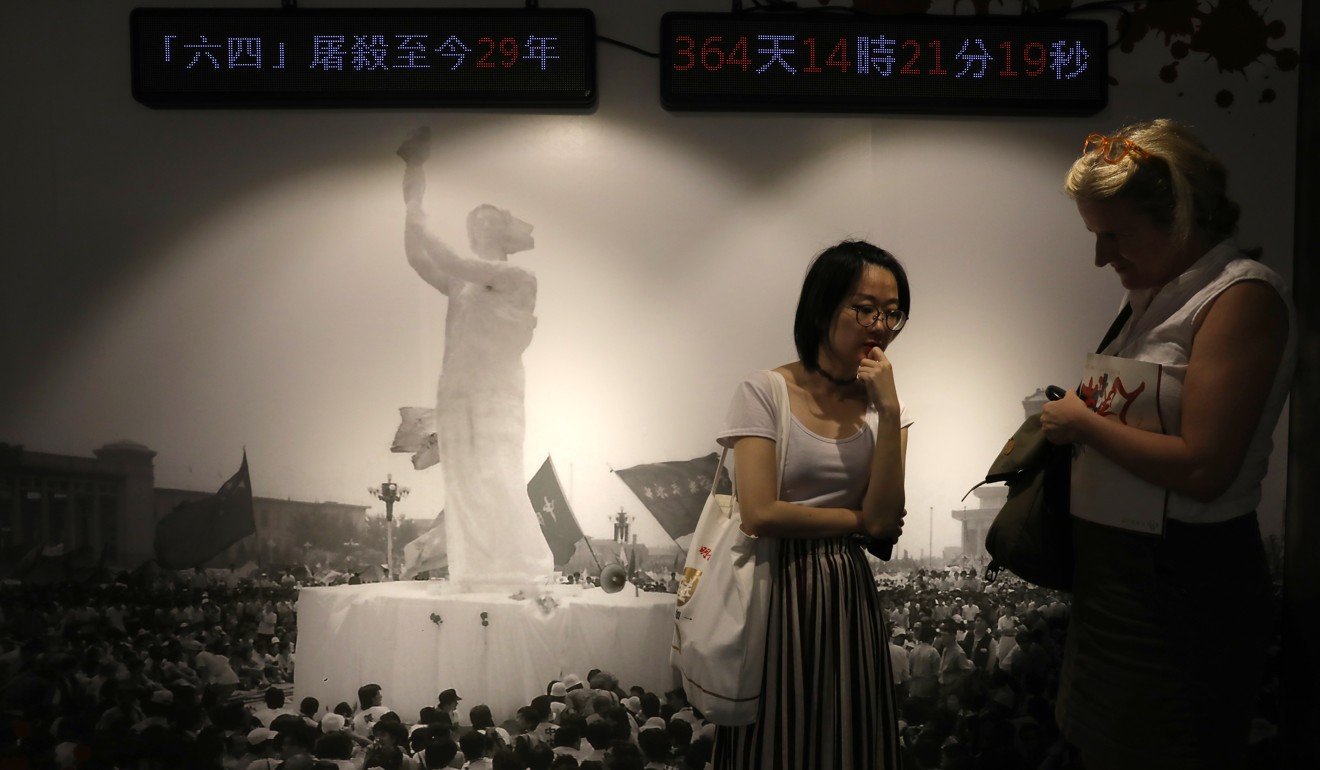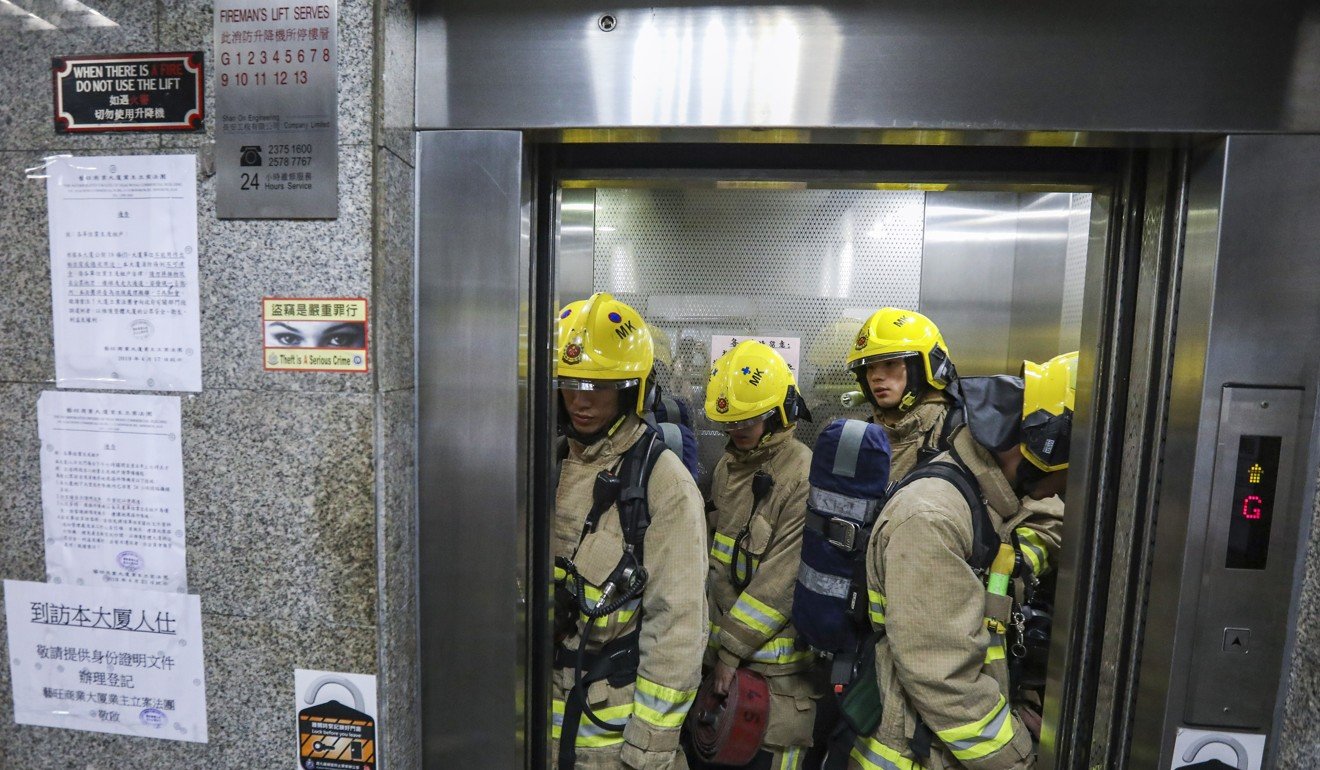
Hong Kong braces for big crowds and high emotions as June 4 vigil for Tiananmen crackdown coincides with anger over extradition proposal
- Organisers expect as many as 180,000 people, equal to ‘peak levels’
- June 4 Museum swamped with visitors – including many from the mainland
Hong Kong is bracing for a momentous June 4 commemoration, with as many as 180,000 people expected for a candlelight vigil, calls for student localists to return to the rallies, and a new Tiananmen movement museum flooded with visitors.
According to the alliance, the largest turnouts came in 2012 and 2014, when at least 180,000 people gathered to mourn the victims of Tiananmen and call for democracy in mainland China.
Some local student leaders continued to call for a boycott, as they had in recent years when resentment against the mainland was running strong.
But Lee remained optimistic about the turnout, saying the alliance and student groups still shared the common goal of achieving justice for the victims and an end to Beijing’s one-party rule.
In a media standup on Tuesday morning, Chief Executive Carrie Lam Cheng Yuet-ngor sidestepped questions on whether she would inform Beijing of calls from Hongkongers to reverse the central government’s vindication of the June 4 crackdown.
“Today is a memorable day for many people. For the SAR government, it shows that Hong Kong is a very free place,” Lam said.
“I hope any public gathering today can be conducted in a quiet and orderly manner.”
She also said the government respects people’s views “on a particular historic incident”.
“People still remember and feel strongly about what happened 30 years ago,” Lee said.
“And the bill reminds people that we should fight against the regime for Hong Kong, which essentially echoes the dissatisfaction against Beijing’s suppression 30 years ago.”

The results of a survey released on Monday by the University of Hong Kong showed that more than 60 per cent of the 1,013 Hongkongers polled believed their actions helped push democracy on the mainland forward. The result was 6 percentage points higher than last year, according to the university’s Public Opinion Programme.
Since it was relocated to a 1,100 sq ft flat in Mong Kok on April 27, the museum has had about 3,700 visitors from home and abroad.
“On a usual day, we have 80 to 100 visitors, but in recent days, daily visits jumped to 200 to 250,” Lee said.
Journalist finds Hong Kong activist he filmed at Tiananmen 30 years ago
Xu Hao, a 32-year-old construction worker from Sichuan province, flew in for the commemoration on June 1 and made a trip to the museum.
“This is my first time in Hong Kong,” Xu said. “I learned more about June 4 last year, and from the information online, I got to know the alliance, the museum and the vigil.”

On Monday, Xu held a shirt showing the Goddess of Democracy that he bought as a souvenir from the museum and said he was touched by how Hongkongers stood up for the protesters in Beijing in 1989.
“I do worry that such commemorations will no longer be allowed in Hong Kong in the future, because even under the ‘one country, two systems’ principle, Hong Kong is increasingly similar to mainland China,” Xu said, referring to the framework under which Beijing governs the city.
He was also pessimistic about any June 4 tributes on the mainland.
Many things will fade away as time passes if we continue to maintain the status quo
“Many things will fade away as time passes if we continue to maintain the status quo,” Xu said.
He added that he felt uncomfortable about what he called the government’s suppression of free thought after he had learned more about the world outside.
“I hope the younger generation, and people in places like Hong Kong, where all this information is accessible, can work together to preserve and promote the memories [of June 4],” he said.
The art of getting Tiananmen Square crackdown onto Chinese social media
Fire services were recently called to the museum after a report of leaking gas was filed – although the museum did not have any gas pipes.
“We believe it’s a false report but we have to come and check,” a firefighter told a Post reporter at the scene.
It was not the first act of intimidation against the museum, which was forced to be relocate from Tsim Sha Tsui after a series of disputes with the building’s owners over its operations.
Twenty days before the opening at the new location, the museum’s door was broken and the power system was damaged. A week later, places near the museum had walls smudged with faeces. Protesters who declined to disclose their identities accused the museum of violating the building’s usage guidelines.

On the museum’s opening day, fire services were called and groups of men in black outfits gathered outside, claiming that they were there to “sweep tombs”.
“In the past, people who didn’t like us would try to push us out by legal means. But now, the harassment has reached an unlawful and even criminal level,” Tsoi said.
What became of Tiananmen Square dissidents after crackdown?
“Just like the candlelight vigil, the museum is a significant political banner of Hong Kong, which on one hand makes it difficult for those in power to cleanse the memories of June 4, and on the other hand, reflects the uniqueness of ‘one country, two systems’,” Tsoi said.

